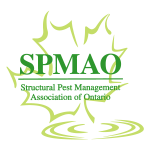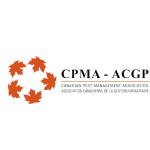Types of Extermination Licenses
Exterminator License
Anyone who has not already been exempt by the Ministry of the Environment, Conservation and Parks, who wishes to engage in the pesticide-based extermination of a pest must have a license from the ministry. Without this license, the individual will be unable to purchase the commercial-grade products needed for proper extermination and will be left with low quality and potency domestic pesticides which cannot fight a serious pest infestation. In order to get a license, you must take two separate exams given by the Ministry of the Environment, Conservation and Parks. The first exam is an open book core test on general knowledge of pesticides. The second test is specific to the type of exterminator you want to be. Generally, you would go for structural extermination as that is the type that is used for businesses and residences. It is limited to treating structures primarily and also covers localized outdoor treatments. With this license, you can perform any amount of exterminations with this license from cockroaches to bed bugs and beyond. Having a structural extermination license will set you on the right track to get a pest control job and make a great salary.
Operator
The operator of an extermination company does not need a specific license other than the original exterminator’s license they started with as an employee of a previous exterminator company. It is not recommended, like with restaurants, to open one without first working at one. While it does not need a license being an operator requires a huge amount of knowledge about every aspect of extermination that your company covers. If you don’t do termites then you can leave that training out. But its important to have a full understanding of it even if you are not going to perform the extermination.
Vendor License
The hardest license to get is the Vendor license. It is for people who want to open a company that works with the very dangerous raw ingredients that form pesticides and manufacture them in a facility. This license is very difficult to get and often requires a chemistry background. The vendor’s license is not part of the exterminator licensing path. It is for someone who will be actually be involved in extermination but will be making the chemicals and pesticides exterminators use to perform their treatments.
Types of Extermination
Structural
Structural extermination as described above is the use of pesticides to exterminate insect infestations in buildings. They can work in any commercial or residential location and can treat just about any pest you can have. While some pests, like termites, require specialized training cockroaches and bed bugs and any other crawling insect you can think of can be eliminated with commercial-grade pesticides in Class 3 up to 7. Beyond those classes are raw materials for making pesticides. These materials are heavily restricted by the ministry and getting them requires this license. However, it is a very lucrative enterprise as there are very few of these manufacturing plants and all exterminator companies in the area would essentially be pressed to buy from you.
Land
Land exterminators work with agriculture, forests and large industrial vegetation. They deal with specific issues like pests that eat crops. They tend to mostly arrange as the actual pesticide is usually spread Aerially by plane. This type of extermination is very different from structural extermination and will mainly involve working directly with the township, large industry and government.
Water
Water or aquatic exterminator is very unusual in how they work. Most of their work will take place underwater. They work with approved pesticides to deal with problematic aquatic vegetation, problematic fish and molluscs and they can also treat for water-born insects like mosquitoes. This sort of license will, like with the land exterminator, focus on commercial and industry and tends not to involve residential or small business.
Technicians and Trainees
Wildlife
While the ministry controls all forms of pesticides with a strong focus on gaseous pesticides they do not regulate wildlife removal, latrine cleaning, including commercial-grade botanical chemicals that can be purchased by anyone and deodorizing chemicals that need no license to use. Any unlicensed technician can install a one-way door to evict a wild animal, clean a latrine or remove a dead animal. None of these activities are covered in the Ministries bylaws. However, if you want to also use pesticides to kill insects then you will need to gain the structural exterminator’s license. As described above there are other licenses you can get, for large scale land operations and even one license for using specialized pesticides underwater. But the best place to start is always as a trainee to a real, licensed exterminator. They will teach you the ropes and you can use any chemical and pesticide under their observation so you will be able to learn a great deal on-site which will make the actual exterminator exam much easier. Trainees and technicians are not licensed exterminators but both can work under an exterminator and handle any chemical the exterminator can. The technician and trainee can also do any wildlife type call on their own, without supervision, assuming they have the proper training for the job.
How to apply
If you want to apply for an exterminators license then you should know that since September 4th, 2018 all licensing must now be done online. The ministry will contact the University of Guelph who handles the exterminator exams. They will organize a date and time for the two exams, the core exam that all exterminators must take and your specific exam for the type of exterminator you want to be. In this case, we assume you want to be a structural exterminator. You will first sign up online at the Ontario.ca website, you will have to pay $165.00 to take the exam and they will mail you two textbooks, one for each test.
Article Updated: September 1, 2020.






